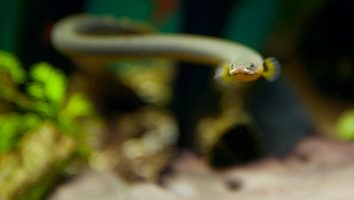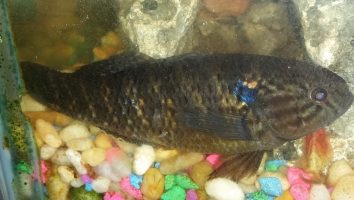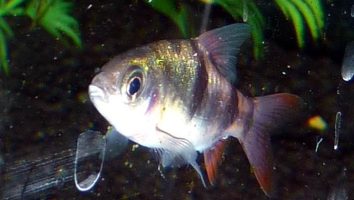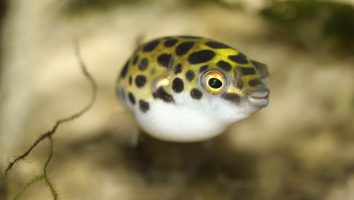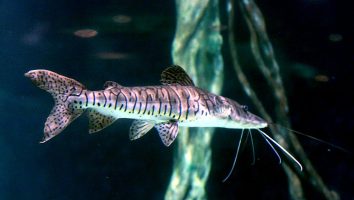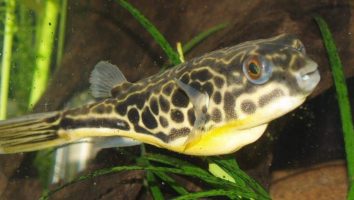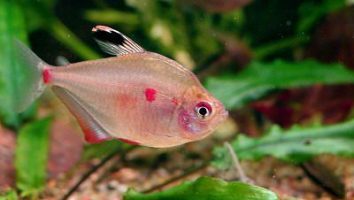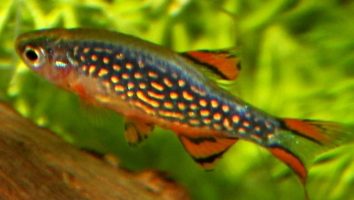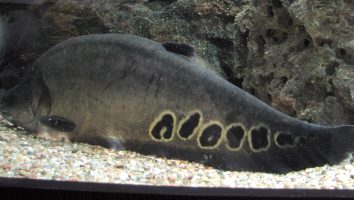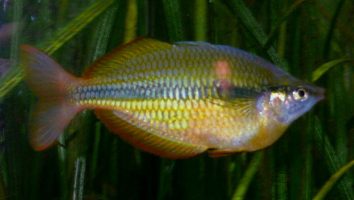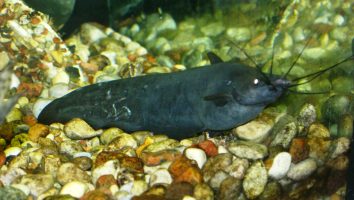The red-bellied pacu is a freshwater fish that is native to the Amazon basin.
This fish is a member of the piranha family, but don’t let that scare you! The red-bellied pacu is a vegetarian and is actually quite gentle.
This guide will teach you everything you need to know about red-bellied pacu care. You’ll learn about their diet, size, lifespan, and more!
Table of contents
Species overview
The red-bellied pacu (scientific name: Piaractus brachypomus) is a freshwater fish that’s native to the Amazon Basin. They’re found in countries like Brazil, Peru, Ecuador, and Colombia.
This fish is a member of the piranha family, but don’t let that fool you – they are not nearly as aggressive as their cousins. In fact, they are actually quite peaceful and are often kept as pets.
The red-bellied pacu is a omnivore, which means that they will eat both plants and animals. In the wild, their diet consists mostly of fruits, nuts, and seeds, but they will also eat small fish, insects, and snails.
These fish can grow to be quite large – up to three feet long! – so it’s important to make sure that you have a tank that is big enough to accommodate them.
Appearance
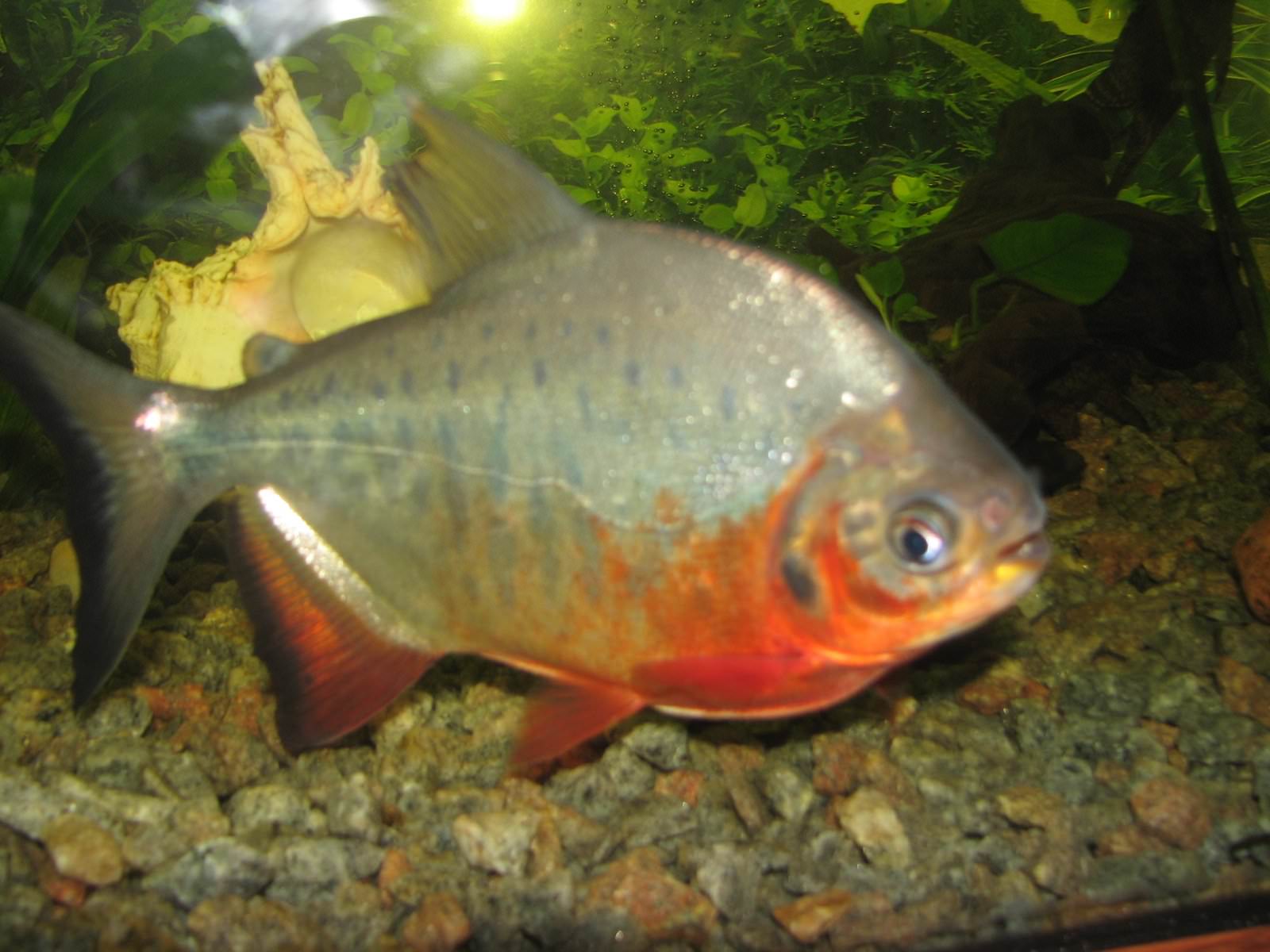
The Red-bellied pacu is a freshwater fish that is native to the Amazon Basin. As their name suggests, the bellies of these fish are red. The rest of their body is a dark gray with a greenish tinge.
The body of the Red-bellied pacu is large and oval-shaped. They have a wide mouth that is filled with sharp teeth.
Their dorsal and anal fins are both large and triangular. The tail is forked and the fins are translucent.
These fish can grow to be quite large, with some individuals reaching up to 4 feet in length!
Lifespan
In the wild, red-bellied pacus can live up to 20 years. However, in captivity, their lifespan is much shorter due to the suboptimal conditions found in many home aquariums.
The typical lifespan of a red-bellied pacu in captivity is only 10 to 12 years. However, with proper care, they can live up to 15 years.
Size
Pacus can grow to be quite large, with some specimens reaching lengths of over 4 feet and weights of over 100 pounds. However, most aquarium-kept pacus stay much smaller, typically reaching lengths of 2 to 3 feet.
Tank
Tank Size
The recommended minimum tank size for a red-bellied pacu is 120 gallons. If you want to keep more than one fish, you should add at least 50 gallons for each additional fish.
These fish can grow to be quite large, so it’s important to provide them with enough space to swim and grow. A larger tank will also allow you to keep more fish in the same space, which can be beneficial for their socialization.
Water Parameters
The Red-bellied Pacu is a freshwater fish that is native to the Amazon Basin. In the wild, they can be found in slow-moving rivers with a sandy substrate.
They are a tropical fish, so they prefer warm water. The ideal temperature range for Red-bellied Pacu is 75 to 82 degrees Fahrenheit.
The pH level of the water should be between 6.5 and 7.5. Red-bellied Pacu are not terribly sensitive to water hardness, but they prefer soft to medium-hard water.
- Water Temperature: 75 to 82 degrees Fahrenheit
- pH Levels: 6.5 to 7.5
- Water Hardness: Soft to Medium-Hard
- Alkalinity Levels: 4-8 dKH
What To Put In Their Tank
When setting up your tank, you need to remember that the red-bellied pacu is a large fish. It can grow to be over three feet long and weigh over fifty pounds.
With that in mind, you need to make sure that your tank can accommodate a fish of that size. The minimum tank size for one of these fish is 125 gallons, but we recommend something larger if you can swing it.
These fish are also known to be fairly messy eaters. This means that you need to have a good filter system in place to keep the water quality high.
As for the substrate, you can use anything that you want. Gravel, sand, or even bare-bottom tanks are all fine.
When it comes to decorations, it’s best to keep things on the minimal side. They aren’t really necessary and these fish have a tendency to uproot them. If you want to include something, we recommend driftwood or rocks.
Common Diseases
While Red-bellied pacus are hardy fish, they are still susceptible to diseases and illnesses. The most common one that affects this species is a parasite known as Cryptocaryon irritans (more commonly known as marine ich or white spot disease).
This disease is characterized by the presence of white spots on the body of the fish. It’s caused by a parasite that enters the fish through the gills and begins to multiply.
If left untreated, this disease can be fatal. The good news is that it’s relatively easy to treat with medication (usually a simple saltwater dip will do the trick).
Another disease that affects Red-bellied pacus is Hole-in-the-Head disease. This is a fairly common disease in freshwater fish, and it’s caused by poor water quality.
It presents itself as, you guessed it, holes in the head of the fish. These holes can eventually lead to serious health problems if left untreated.
The best way to prevent these diseases is to maintain a clean and stable environment for your fish. Regular water changes and careful attention to water quality will go a long way in keeping your fish healthy and happy.
Behavior & Temperament
The red-bellied pacu is a peaceful fish that is known to get along well with other tank mates. They are not an aggressive fish, but they can be territorial.
The red-bellied pacu is a curious fish and will often swim up to the glass to see what is going on outside of their tank. They are also known to be good jumpers, so it is important to have a lid on their tank.
When it comes to food, the red-bellied pacu is not a picky eater. They will eat just about anything that you put in their tank.
Tank Mates
The red-bellied pacu is a large fish, so it’s important to find tank mates that can hold their own. These fish are also known for being a bit nippy, so peaceful fish are out of the question.
The ideal tank mate for a red-bellied pacu is another large, semi-aggressive fish. This will provide a good balance in the tank and keep the pacu from getting too rowdy.
Some good tank mates for red-bellied pacus include:
- Oscarfish
- Green Terror
- Convict Cichlid
- Firemouth Cichlid
- Jack Dempsey
- Plecostomus
- Silver Dollar Fish
Breeding
The Red-bellied pacu is a beautiful fish that’s fun to watch and relatively easy to care for. But what about breeding?
It’s actually not too difficult to breed these fish in captivity. The first thing you need to do is sex them. Males and females have different patterns on their tails. Males also have longer fins.
Once you’ve sexed your fish, you’ll need to set up a breeding tank. It should hold at least 50 gallons of water. The water should be between 77 and 86 degrees Fahrenheit. The pH should be between 6.5 and 7.5.
You’ll also need to add some plants and hiding places. Red-bellied pacus like to have a lot of places to hide.
When the tank is set up, add two females for every male. The males can be a bit aggressive, so the extra females will help keep the peace.
Feed the fish plenty of high-quality foods. Then, begin changing about 50 percent of the water. That should trigger spawning.
You’ll know you’re successful when you see the female deposit eggs on the plants. After she does that, the male will guard them diligently.
The eggs will hatch in about two days. You can move the babies into a nursery tank to improve their odds of survival. Feed them mashed peas and other green vegetables until they’re ready to join the adults in your main tank.
Conclusion
The red-bellied pacu is a large, deep-bodied freshwater fish that is native to the Amazon Basin. They are a popular aquarium fish and can grow to be over two feet in length.
While they are a peaceful fish, they are not recommended for beginner aquarium owners due to their large size and the special care they require.
If you are an experienced aquarium owner and are looking for a fish that is a little bit different, the red-bellied pacu might be the fish for you!

